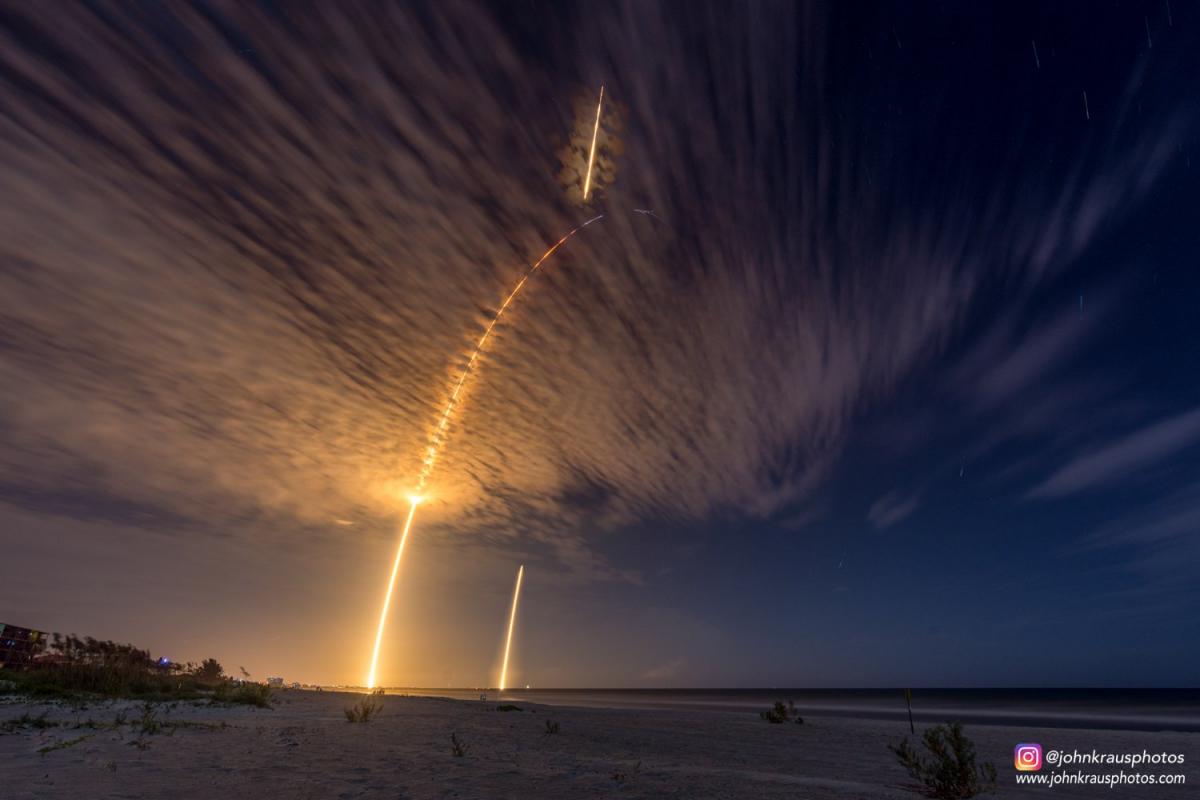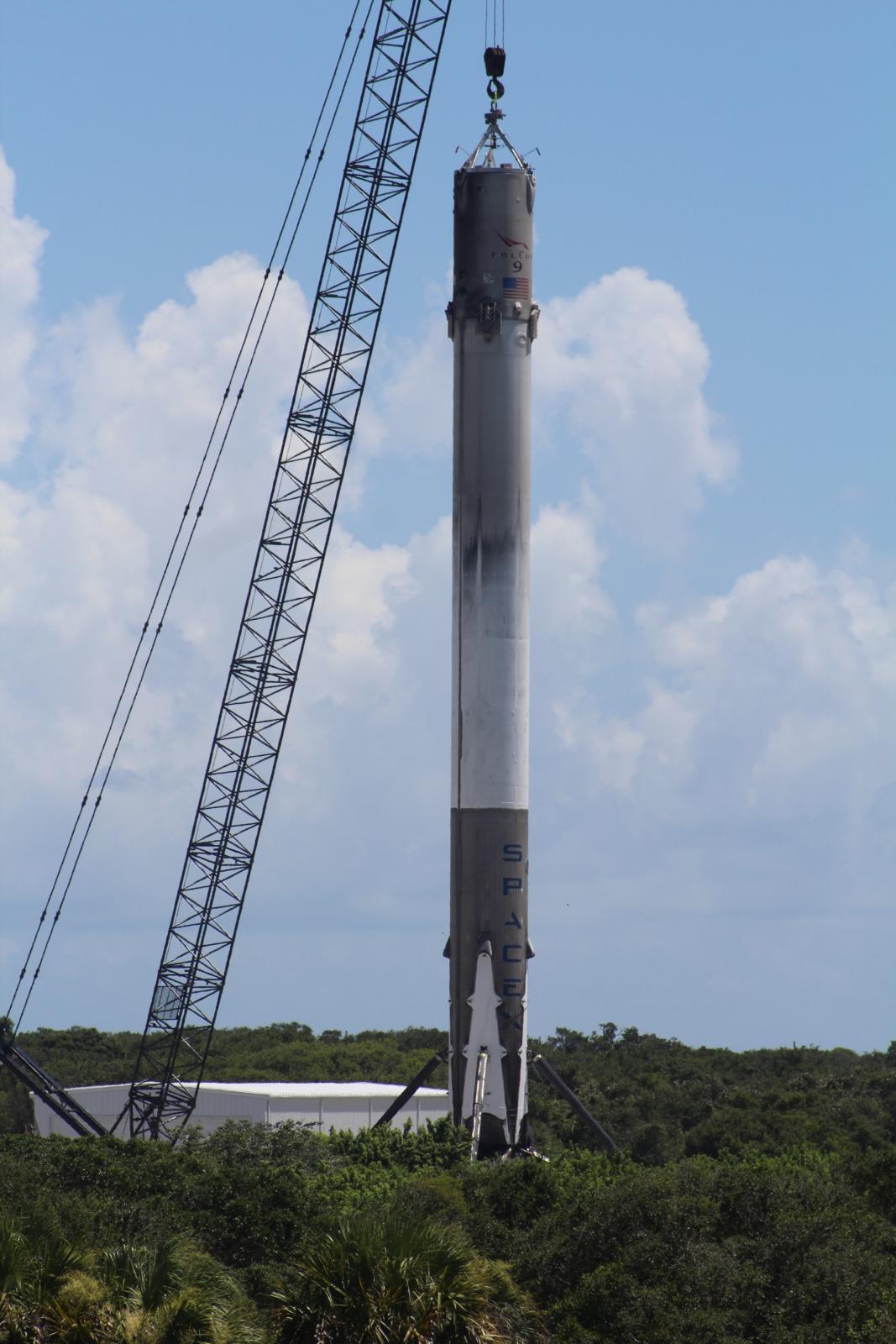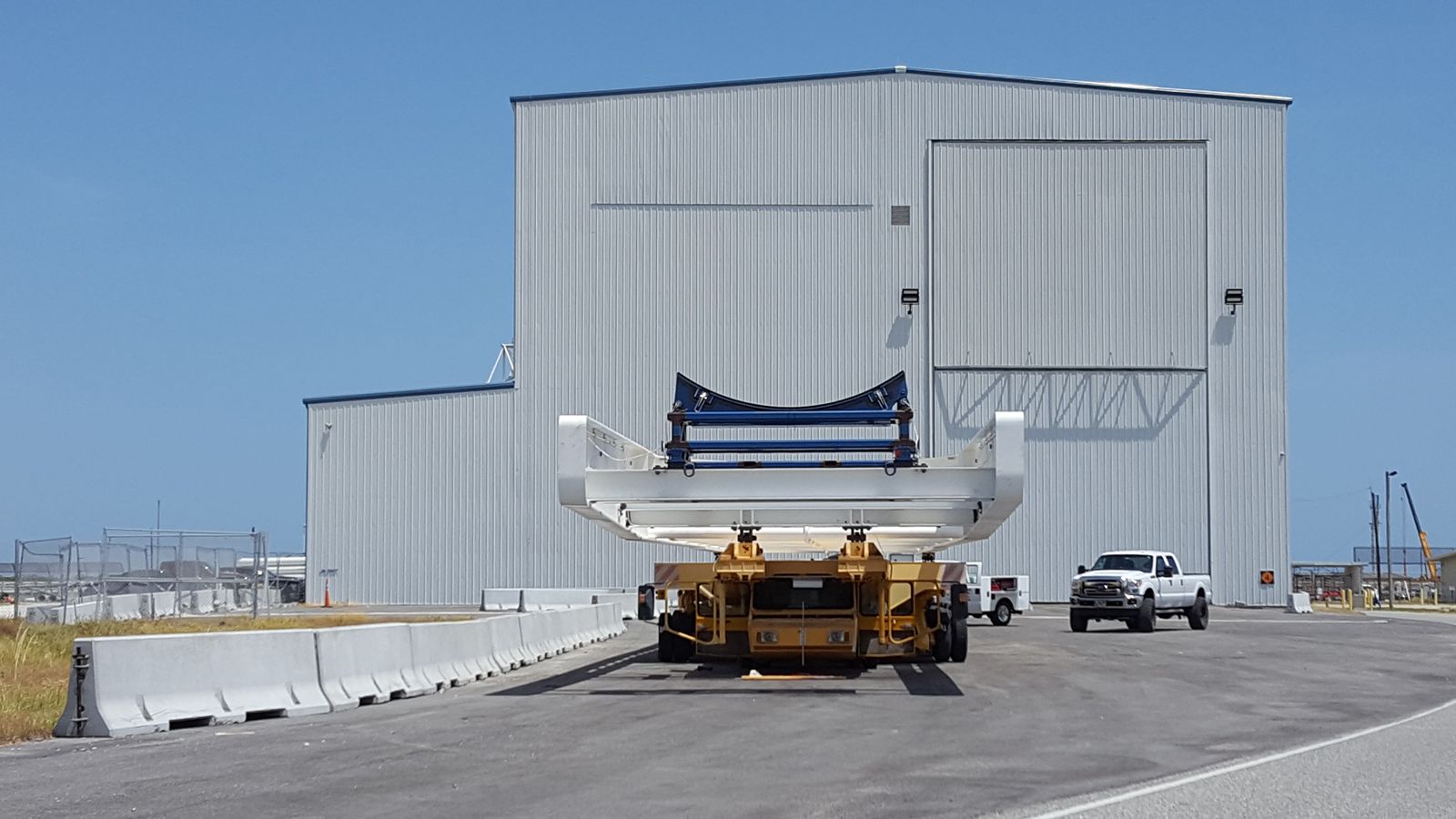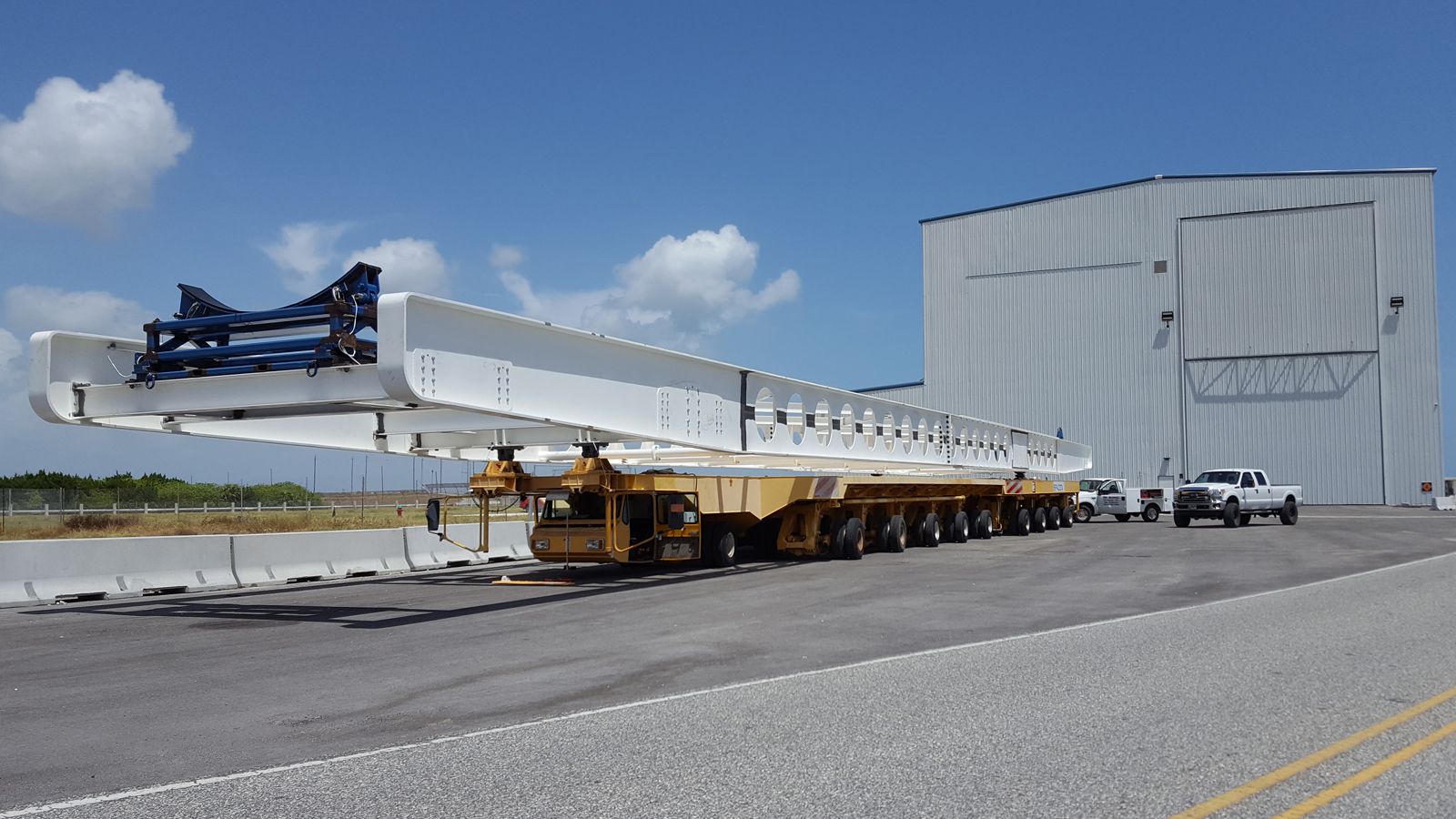They've been busy boys and girls.
Since the December 21 first stage landing several more have landed, including the CRS-9 Dragon mission to ISS over a week ago.Technical stream of the last bit - starting with the 3 engine re-entry burn
After running upgrades based on previous landings, this F9 is very clean - nothing a scrub pad and soap can't clean off - most all soot.
Time exposure of launch, re-entry burn and landing burn.

Bill "The Roadie" Carton got this shot the day after the landing.

The first re-flown Falcon 9 is expected to launch in September or October. Two customers are bidding for the ride. Insurers are on board.
======
SpaceX has 2 launches in August; Japan's JCSAT-16 and Israel's AMOS-6, both large geostationary commsats massing about 5,500 kg.
======
Preparations continue for the Falcon Heavy debut launch. The 3 cores are being built but the driver is completing LC-39A for it. The launch tower has to be clad in armor to protect it from the blast of the recently updated 27 Merlin 1D++ engines, now producing 170,000 - 190,000 pounds of thrust each. Over 5.1 million pounds of thrust total.
======
As part of their Mars program, a Red Dragon (a Dragon 2) is scheduled to leave for Mars in 2018. 2 more Red Dragons launch in 2020.
======
On September 27, 2016 SpaceX will present a major report at the International Astronautics Conference (IAC) in Guadalajara, Mexico. Topic,
"Colonizing Mars - A deep technical presentation on the space transport architecture needed to colonize Mars"
In it they will document the BFR (big f'ing rocket) and BFS (big f'ing spaceship), among other things and the real names for both of these beasts.
There's not much that can be said in public yet, but public side modeling by US and Russian engineers on the NSF site describes a rocket /vehicle stack massing up to 6,000 metric tonnes. 15 meters wide, or 1.5x the width of a Saturn V.
The Raptor methane engines are on the test stand, and the first BFR/BFS test launch should happen about 2020. An unmanned Mars landing is penciled in for 2022, and a manned Mars landing for 2025.
Since the December 21 first stage landing several more have landed, including the CRS-9 Dragon mission to ISS over a week ago.Technical stream of the last bit - starting with the 3 engine re-entry burn
After running upgrades based on previous landings, this F9 is very clean - nothing a scrub pad and soap can't clean off - most all soot.
Time exposure of launch, re-entry burn and landing burn.

Bill "The Roadie" Carton got this shot the day after the landing.

The first re-flown Falcon 9 is expected to launch in September or October. Two customers are bidding for the ride. Insurers are on board.
======
SpaceX has 2 launches in August; Japan's JCSAT-16 and Israel's AMOS-6, both large geostationary commsats massing about 5,500 kg.
======
Preparations continue for the Falcon Heavy debut launch. The 3 cores are being built but the driver is completing LC-39A for it. The launch tower has to be clad in armor to protect it from the blast of the recently updated 27 Merlin 1D++ engines, now producing 170,000 - 190,000 pounds of thrust each. Over 5.1 million pounds of thrust total.
======
As part of their Mars program, a Red Dragon (a Dragon 2) is scheduled to leave for Mars in 2018. 2 more Red Dragons launch in 2020.
======
On September 27, 2016 SpaceX will present a major report at the International Astronautics Conference (IAC) in Guadalajara, Mexico. Topic,
"Colonizing Mars - A deep technical presentation on the space transport architecture needed to colonize Mars"
In it they will document the BFR (big f'ing rocket) and BFS (big f'ing spaceship), among other things and the real names for both of these beasts.
There's not much that can be said in public yet, but public side modeling by US and Russian engineers on the NSF site describes a rocket /vehicle stack massing up to 6,000 metric tonnes. 15 meters wide, or 1.5x the width of a Saturn V.
The Raptor methane engines are on the test stand, and the first BFR/BFS test launch should happen about 2020. An unmanned Mars landing is penciled in for 2022, and a manned Mars landing for 2025.









Comment